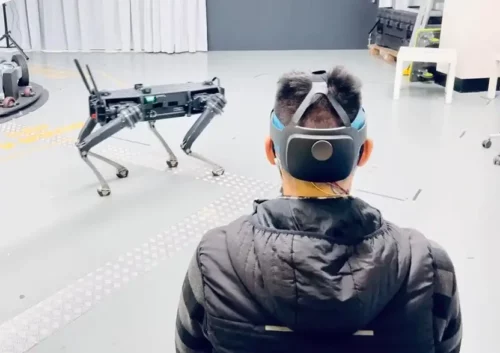Researchers have developed new “dry” brain sensors to diagnose neurological disorders or control external devices.

Brain-machine Interface(BMI) or Brain-Computer Interface(BCI) started as a way to treat psychological disorders. But the applications of this technology exceed far beyond what we might expect at this stage. However, researchers have been slowly adapting BCI into various other projects such as prosthetics and now even to operate robots just by thinking of moving it.
Researchers from University of Sydney have designed a 3D-patterned, graphene-based, dry sensor that can measure the brain’s electrical activity without relying on conductive gels. The dry sensors are less irritating and allergenic compared to traditional “wet” sensors used in electroencephalography (EEG) to diagnose neurological disorders or control external devices through brain-machine interfaces.
As an alternative to the wet sensors which stick onto the head with a gloopy gel, researchers have been developing 3D patterned “dry” sensors that don’t require gels, but thus far none have worked as well as the gold-standard wet variety.
Although nanomaterials like graphene could be a suitable option, their flat and typically flaky nature makes them incompatible with the uneven curves of the human head, particularly over long periods. So, Francesca Iacopi and colleagues wanted to create a 3D, graphene-based sensor based on polycrystalline graphene that could accurately monitor brain activity without any stickiness.
The team created several 3D graphene-coated structures with different shapes and patterns, each around 10 µm thick. Of the shapes tested, a hexagonal pattern worked the best on the curvy, hairy surface of the occipital region — the spot at the base of the head where the brain’s visual cortex is located. The team incorporated eight of these sensors into an elastic headband, which held them against the back of the head.
When combined with an augmented reality headset displaying visual cues, the electrodes could detect which cue was being viewed, then work with a computer to interpret the signals into commands that controlled the motion of a four-legged robot — completely hands-free.
Although the new electrodes didn’t yet work quite as well as the wet sensors, the researchers say that this work represents a first step toward developing robust, easily implemented dry sensors to help expand the applications of brain-machine interfaces.
Reference: “Noninvasive Sensors for Brain–Machine Interfaces Based on Micropatterned Epitaxial Graphene” by Shaikh Nayeem Faisal, Tien-Thong Nguyen Do, Tasauf Torzo, Daniel Leong, Aiswarya Pradeepkumar, Chin-Teng Lin and Francesca Iacopi, 16 March 2023, ACS Applied Nano Materials.
DOI: 10.1021/acsanm.2c05546






